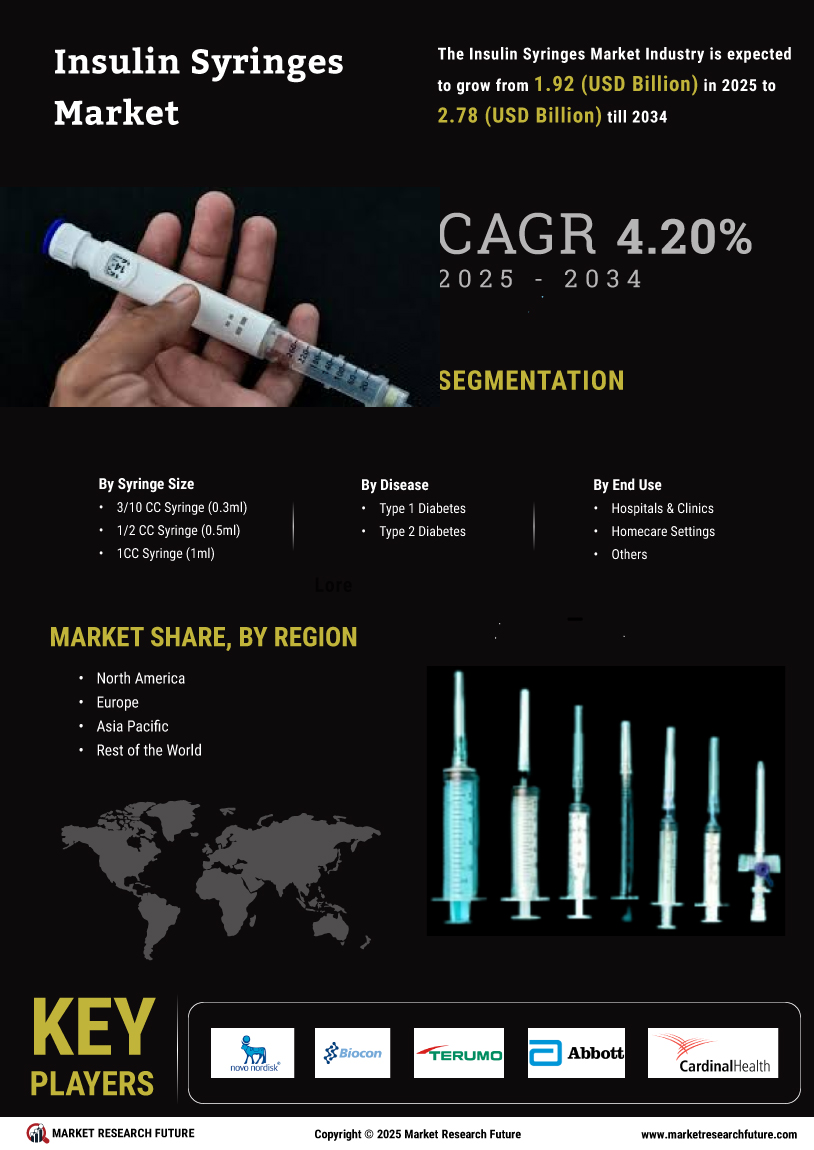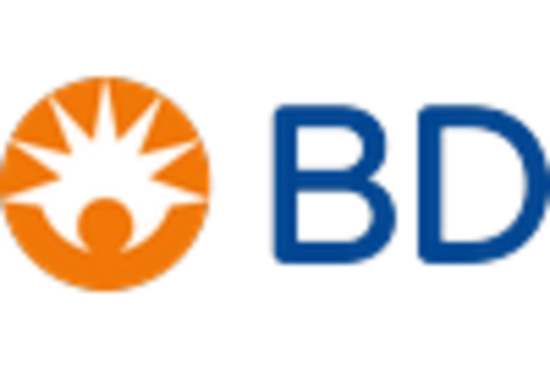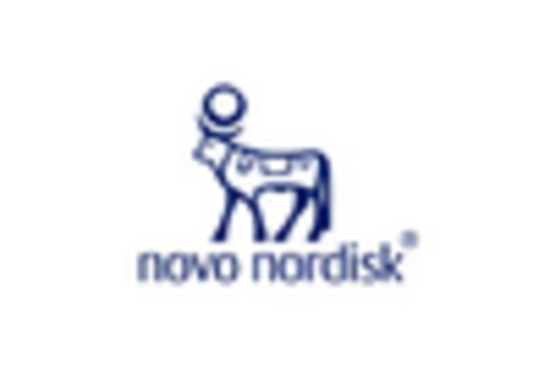Rising Geriatric Population
The increasing geriatric population is a significant factor influencing the Insulin Syringes Market. As individuals age, the risk of developing chronic conditions, including diabetes, escalates. The World Health Organization estimates that the number of people aged 60 years and older will reach 2 billion by 2050. This demographic shift is likely to result in a higher prevalence of diabetes among older adults, thereby driving the demand for insulin syringes. Moreover, older patients often require assistance with insulin administration, which may lead to a greater reliance on healthcare services and products. Consequently, the Insulin Syringes Market is expected to expand as healthcare systems adapt to meet the needs of this growing population segment.
Increasing Prevalence of Diabetes
The rising incidence of diabetes worldwide is a primary driver for the Insulin Syringes Market. According to recent statistics, the number of individuals diagnosed with diabetes has reached approximately 537 million, with projections indicating a potential increase to 643 million by 2030. This alarming trend necessitates the need for effective diabetes management solutions, including insulin syringes. As more patients require insulin therapy, the demand for insulin syringes is expected to grow significantly. Furthermore, the increasing prevalence of obesity, which is closely linked to type 2 diabetes, further exacerbates this situation. Consequently, healthcare providers are likely to emphasize the importance of insulin delivery systems, thereby propelling the Insulin Syringes Market forward.
Government Initiatives and Support
Government initiatives aimed at improving diabetes care and management are playing a crucial role in shaping the Insulin Syringes Market. Many countries are implementing policies to enhance access to diabetes treatment, including subsidizing the cost of insulin syringes for patients. These initiatives not only alleviate the financial burden on patients but also encourage adherence to prescribed treatment regimens. Furthermore, public health campaigns aimed at raising awareness about diabetes prevention and management are likely to increase the number of individuals seeking insulin therapy. As governments continue to prioritize diabetes care, the Insulin Syringes Market is poised for growth, driven by increased accessibility and support for patients.
Technological Innovations in Syringe Design
Technological advancements in the design and functionality of insulin syringes are transforming the Insulin Syringes Market. Innovations such as safety-engineered syringes, which reduce the risk of needlestick injuries, are gaining traction among healthcare professionals. Additionally, the introduction of pre-filled syringes and smart syringes equipped with digital tracking capabilities enhances patient compliance and monitoring. These advancements not only improve the user experience but also contribute to better health outcomes for patients. The market for insulin delivery devices is projected to grow at a compound annual growth rate (CAGR) of around 8.5% from 2023 to 2030, indicating a robust demand for innovative insulin syringes. As technology continues to evolve, the Insulin Syringes Market is likely to witness further enhancements that cater to the needs of both patients and healthcare providers.
Growing Demand for Home Healthcare Solutions
The shift towards home healthcare solutions is significantly impacting the Insulin Syringes Market. With an increasing number of patients opting for self-management of their diabetes, the demand for insulin syringes suitable for home use is on the rise. This trend is further supported by the growing availability of educational resources and training programs that empower patients to administer their insulin effectively. The convenience of home healthcare not only enhances patient autonomy but also reduces the strain on healthcare facilities. As a result, the Insulin Syringes Market is likely to experience a surge in demand for user-friendly and portable insulin delivery systems that cater to the needs of patients managing their diabetes at home.


















Leave a Comment